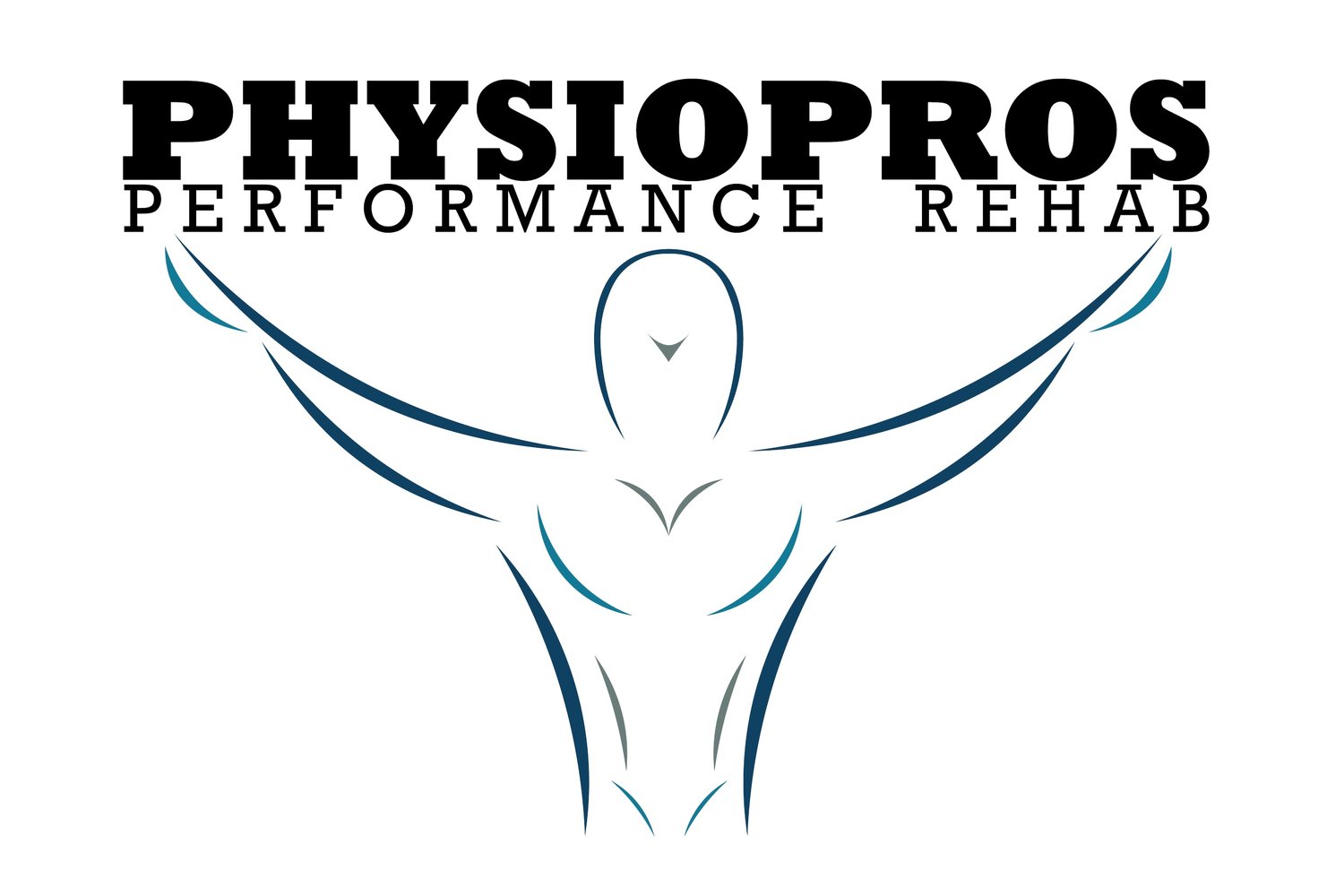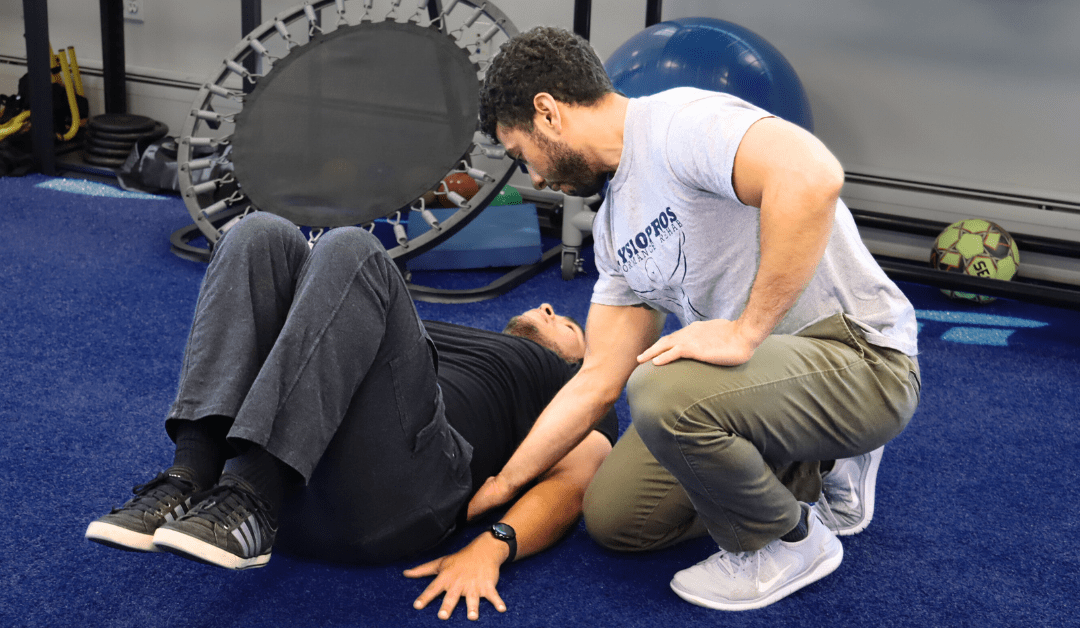Think your core muscles only matter for getting six-pack abs? Think again! Whether you’re running, cycling, lifting weights, or just going about your day, your core plays a crucial role in almost every movement you make. At Physiopros Performance Rehab, we believe that building a strong core isn’t just for athletes or fitness buffs, it’s for anyone who wants to stay active, healthy, and pain-free.
In this post, we’ll explore the benefits of a strong core and why it’s so important for active individuals like you. We’ll dive into how core strength can boost your performance, protect you from injuries, improve your posture, and even make everyday tasks easier. Plus, we’ll share some tips on how to build a stronger core and tackle a few questions that you might have.
Ready to find out why your core deserves a little extra attention? Let’s get started!
What Is Your Core and Why Does It Matter?
When most people think about their core, they picture their abs. But your core is much more than just your abdominal muscles. It includes a whole network of muscles that wrap around your midsection, such as those in your lower back, hips, and pelvis. These muscles work together to support your spine, stabilize your body, and help you move efficiently.
The Role of Your Core
Your core acts like the foundation of a building. Just like a strong foundation keeps a building upright, a strong core helps keep your body balanced and stable. Every time you move, whether you’re standing, bending, twisting, or lifting, your core muscles engage to keep your spine aligned and protect it from strain or injury. In fact, nearly every movement you make involves your core, even if you don’t realize it!
Common Misconceptions About the Core
It’s easy to think that the core is all about having a toned stomach, but that’s only part of the story. The core is actually made up of many muscles, including the transverse abdominis, obliques, diaphragm, rectus abdominis and pelvic floor muscles. These muscles work together to give you strength, stability, and balance. So, while crunches may work some of your core muscles, they’re just a small piece of the puzzle.
Understanding what your core really is, and why it matters, is the first step in realizing how crucial it is for everything you do, from sports to simple daily activities. A strong core is your body’s powerhouse, and it’s time to give it the attention it deserves!
Top 4 Benefits of a Strong Core for Active Individuals
1. Improved Performance in Sports and Exercise
Whether you’re running, swimming, cycling, or lifting weights, a strong core helps you move more efficiently. It provides a solid base for generating power, balance, and coordination in almost every sport or workout. For example, runners rely on their core to maintain proper posture and stride, while weightlifters need a stable core to lift safely and effectively. Strengthening your core helps boost your performance by making your movements more controlled and powerful.
2. Reduced Risk of Injury
A strong core acts like your body’s natural armor, protecting you from injuries. It stabilizes your body during movement and helps maintain proper alignment. When your core is weak, other muscles have to pick up the slack, which can lead to strains, sprains, and other injuries. By building a strong core, you’ll have better control over your movements, which reduces the risk of accidents and injuries both in and out of the gym.
3. Better Posture and Spinal Health
Good posture isn’t just about standing up straight; it’s about maintaining the right alignment in your spine. Your core muscles support your spine and help you keep good posture, which reduces the risk of developing back pain or spinal problems. A strong core helps you sit, stand, and move with proper form, making everyday activities more comfortable and reducing the strain on your back and neck.
4. Enhanced Everyday Functionality
From carrying groceries to picking up your kids or bending down to tie your shoes, your core is constantly working to support your daily movements. When your core is strong, these activities become easier and less tiring. You’ll have better balance and stability, making you feel more confident in your movements, whether you’re taking a yoga class or simply walking up the stairs.
How to Build a Strong Core
Now that you know why a strong core is so important, let’s talk about how you can start building one. Strengthening your core doesn’t require fancy equipment or hours at the gym. With the right exercises and some dedication, you can develop a stronger core that will support all your favorite activities.
Effective Core Exercises
To achieve the benefits of a strong core, it’s essential to target all the muscles, not just the abs. Here are some effective exercises that work multiple core muscles:
- Dead Bugs: Lie on your back with your arms extended toward the ceiling and knees bent at 90 degrees. Slowly lower one arm and the opposite leg toward the floor while keeping your lower back pressed into the ground. Return to the starting position and switch sides. This exercise helps build core stability and coordination by engaging both the front and back core muscles.
- Wood Chops: Stand with your feet shoulder-width apart, holding a weight or cable column. Start with the weight up by one shoulder, then twist your torso and “chop” down diagonally across your body to the opposite hip. Return to the starting position and repeat on the other side. This dynamic movement works the obliques, back, and shoulders, improving rotational strength.
- Bridges: Lie on your back with your knees bent and feet flat on the floor. Lift your hips toward the ceiling, squeezing your glutes and engaging your core, then slowly lower back down. This exercise strengthens the lower back, glutes, and abdominal muscles, which helps support the spine and improve stability.
- Planks: Planks are one of the best exercises for overall core strength. Start by holding a push-up position with your body in a straight line from head to heels. Keep your abs tight and hold for 20-30 seconds, gradually increasing the time as you get stronger. Planks engage multiple core muscles, including the abdominals, back, and shoulders, enhancing endurance and stability.
Here are some videos of core exercises you need to try:
Chinese Planks (Optional: With Marches)
Incorporating Core Work Into Your Routine
You don’t need to spend hours on core exercises to see the benefits of a strong core. Aim to incorporate core work into your routine 2-3 times a week. You can do a dedicated 10-15 minute core workout or add core exercises at the end of your regular workout. Gradually increase the intensity by adding more challenging moves or using weights.
Avoiding Common Mistakes
When it comes to core training, quality matters more than quantity. Avoid these common mistakes:
- Overdoing Crunches: Crunches focus mainly on the upper abs and don’t engage the deeper core muscles. Mix up your routine with exercises that target different areas of your core like the ones mentioned above.
- Neglecting Your Back Muscles: The core includes your lower back muscles, so make sure to do exercises like bridges or back extensions to strengthen the entire core area.
- Ignoring Form: Proper form is crucial for effective core training. Engage your core muscles during each exercise, and avoid arching your back or holding your breath.
By incorporating these exercises into your routine and focusing on proper form, you’ll build a strong, stable core that supports your active lifestyle. Here, at Physiopros, we’re here to help you get started with personalized guidance and a plan that will help you achieve all of the benefits of a strong core.
FAQ
- Q: How often should I do core exercises?
A: For most people, 2-3 times a week is a good goal. This allows your muscles to recover while building strength. You don’t need to do a long workout, 10-15 minutes focusing on quality exercises is enough to see progress. - Q: Can core exercises help with back pain?
A: Yes! A strong core supports your spine, improves your posture, and helps reduce the strain on your back muscles. Strengthening your core can prevent or reduce back pain, especially when paired with good overall posture and movement habits. - Q: Do I need special equipment to strengthen my core?
A: No special equipment is necessary. Many of the most effective core exercises, like planks, dead bugs, and bridges, only use your body weight. If you want to add variety, you can use light weights, resistance bands, or a medicine ball. - Q: How long does it take to see results from core training?
A: The time it takes to see results can vary depending on your starting point and consistency. Most people notice improvements in strength, stability, and posture within 4-8 weeks of regular training. Remember, consistency is key! - Q: Will core exercises give me a six-pack?
A: Core exercises strengthen the muscles, but visible abs depend on overall body fat levels. Core training combined with a healthy diet and regular cardio exercise can help reduce body fat, which may reveal more muscle definition. - Q: Are core exercises only for athletes?
A: Not at all! Core strength is important for everyone, regardless of age or fitness level. A strong core helps with everyday activities, improves balance, reduces the risk of injury, and supports a healthy, active lifestyle.
At Physiopros Performance Rehab, we’re here to answer any questions you have about core strength and help you create a personalized plan to reach your goals. Feel free to reach out with any concerns or to schedule a consultation call us at (973) 265-8621 or fill out our contact form online: Contact Form.

